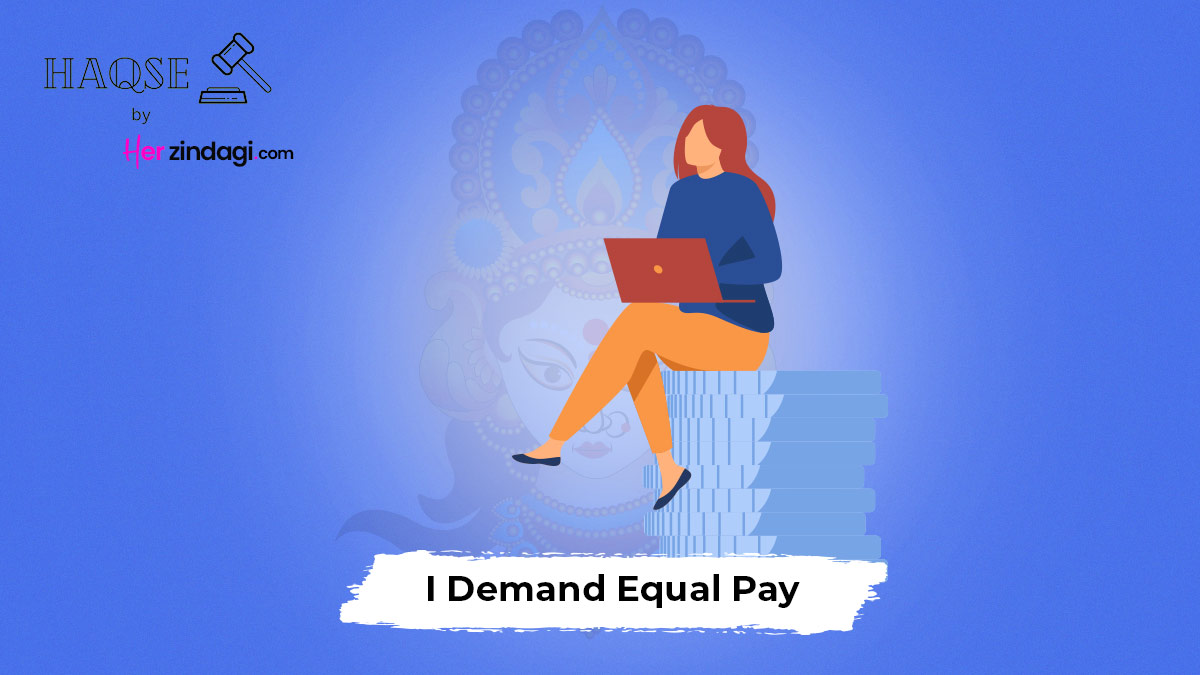
Navratri 2023: While Maa Shailputri Stands For Prosperity, Women Struggle For Equal Pay
Chaitra Navratri starts on March 22, and on the first day, devotees offer prayers to Maa Shailputri (Goddess Shailaputri). According to legends, she is the daughter of the Mountain King Himavat. Hence the name.
She is the first form of Goddess Durga, who symbolises prosperity and good fortune. People offer her prayers for spiritual awakening and invite good luck into their homes.
While Navratri is huge among Hindu communities, most forms of Goddess Durga are mere symbols. The festival might be celebrated across the globe, yet women struggle to find opportunities and equal pay to men. Devotees from all walks of life offer prayers to the Goddess, but still deprive women of basic rights to live with dignity.
Since Maa Shailputri symbolises prosperity, this article will tell you how women in India and the world are fighting for equal pay.
Pay Parity In India

According to the World Inequality report of 2022, Indian men earn about 82% of the labour income, while women stand at only 18%. Though we have the Equal Remuneration Act of 1976 and the Minimum Wages Act of 1948 in place, every day, women are struggling to stand shoulder-to-shoulder with men in terms of salaries.
A 2022 report by the International Labour Organization pointed out that Indian women earned 48% less than their male colleagues in 1993-94. This gap declined to 28% in 2018-19. The decline was evident in the National Sample Survey Office (NSSO) report.
This was before the pandemic, which hit the entire world hard. In a report published in People At Work 2021: A Global Workforce View, only 65% of working women received a pay rise or bonus compared to 70% of men.
Although the onus of running the family, keeping the house clean and cooking for loved ones fell on women, along with responsibilities at the office, most of their labour went unaccounted for because of the social dynamics of society. From 2018-19, the pay gap increased by 7% in 2020-2021.
Factors Responsible For Gender Pay Gap In India

Whether you pick the Hindi film industry or any other sector, gender bias exists everywhere. Every industry’s ordeal is about how to bridge this gap. Discrimination is the biggest factor behind the gender pay gap across the globe.
Other factors include the undervaluation of women, the motherhood pay gap and cultural barriers. If an employer thinks that a woman’s attention would be diverted if she is a mother, they would offer lower pay. It is one of the primary reasons why even today many interviewers confirm if a female interviewee is married or planning a baby, despite these questions being personal and illegal.
While urban women are more educated than rural women, they struggle the most to find work opportunities that pay them at par with their male counterparts. There is a stereotype attached to women that they are more devoted to their homes than to the office.
However, no employer is willing to consider that socially it is upon a woman’s shoulder to cater to the demands at home. If any member of the family is unwell, the woman is expected to stay at home and take care of them. If guests are coming to the house, it is a woman’s duty to cook delicacies for them and make them feel at home.
One person bearing the burn of social responsibilities and expectations cannot be expected to be 100% devoted or keep their personal life and professional life separated. It is practically not possible, yet most women do it effortlessly, or rather make it seem like that.
In many cases, the literacy rate is also a factor. Many households in rural areas reserve higher education for their sons. This means girl children do not get opportunities to go to school and colleges and build up their skillset. Therefore, they go for menial jobs, which further plays a significant role in widening the pay gap.
Globally, we have seen that many expecting women and new mothers were laid off last year by renowned companies. While there is no data showing whether it was done deliberately, stories made round on social media pointed out that more women were laid off compared to males. Some stories also pointed out that because they were seen as a social burden, therefore, they had to lose their jobs.
What Can We Do About It?

The only way to bridge this gap is by creating job opportunities irrespective of considering gender roles. Today, women are a part of the Indian armed forces, driving trains and buses, building homes and whatnot. There are hardly any jobs that are gender-specific, and household chores are not one of them.
We need to train our sons to equally participate in household tasks so that they can share the burden of the family with women. At offices, HR must strictly follow the policy for equal pay at a certain designation.
In India, the Mahatma Gandhi National Rural Employment Guarantee Act (MGNREGA) of 2005 has helped bridge the gap in rural areas. The Maternity Benefit Act of 1961 and its amendments in it have safeguarded the rights of pregnant women. Under this, a woman can claim benefits if her employer fires her for being pregnant.
The gender gap is narrowing, but the progression is slow. We still have decades before men and women would get equal pay. This is when we only consider binary people, if we research deeper into the spectrum of genders and sexualities, the reality would leave anyone astonished.
Also watch this video
Herzindagi video